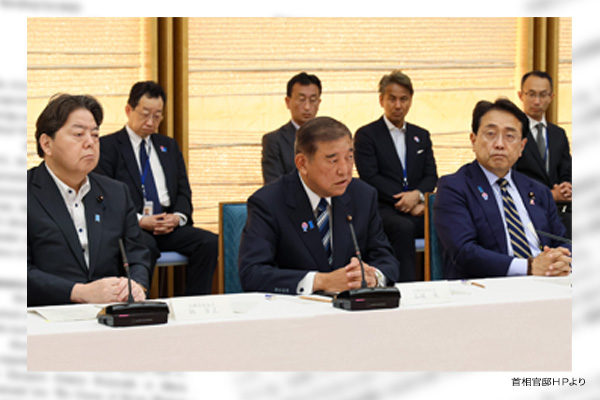Japan-U.S. tariff negotiations reached an agreement on July 23. The main focus was a U.S. tariff on automobiles, particularly passenger cars, as the auto industry is a cornerstone of Japan’s economy. The tariff was set at 15% under the agreement. Some in Japan welcomed the tariff rate because it was lower than the additional tariff of 25% that had been unilaterally imposed since April 3. Under the previous Japan-U.S. trade agreement, however, the tariff rate for passenger cars was only 2.5%, meaning that the rate was raised six-fold under the new accord.
The agreement was reportedly made possible in large part by Japan’s offer to establish a framework for $550 billion in private-sector investment in the U.S., although the U.S. announcement indicated that an unfair 90% of the resulting profits would belong to the American side. Still, there is no official document on the agreement, with details of the investment scheme left unknown. The just reached tariff agreement is extremely anomalous as an international pact.
High Trump tariffs violating WTO rules
During the Great Depression of the 1930s, the U.S. used high tariffs under the Smoot-Hawley Tariff Act to create an economic bloc, triggering World War II. Reflecting on the action after the war, the U.S. pursued a free, non-discriminatory, multilateral, and mutually beneficial trade system. This was in line with the post-war GATT (General Agreement on Tariffs and Trade) - WTO (World Trade Organization) regime.
As economic globalization has progressed, however, multinational corporations have taken away U.S. profits and stiff competition from foreign low-wage workers has led to widening inequality among Americans. U.S. President Donald Trump is trying to bring strong manufacturing back to his country and rebuild a strong America by achieving a trade surplus.
The WTO is based on the principle of free and non-discriminatory trade, including the most-favored-nation treatment rule under which the preferential trade treatment given to a specific WTO member country is applied to all member countries, as well as the bound tariff rate system in which WTO member countries promise to limit a tariff on each imported good. Since the Trump administration sets tariff rates in line with non-tariff trade barriers on a country-by-country basis, tax rates differ by country, running counter to the most-favored-nation treatment rule. Given that the U.S. bound tariff rate on passenger cars is set at 2.5%, Trump-set tariffs far exceed the bound tariff rate.
Japan failed to file WTO suit
While the U.S. cites national security reasons as the basis for the exception to the WTO principles, its claim is not convincing. Although the WTO is described as dysfunctional, Japan, like the European Union and Canada, should have seriously considered filing a petition with the WTO against Trump tariffs,
As any WTO suit against the hegemonic U.S. is ineffective of course, it is inevitable for U.S. trading partners to make deals to alleviate high U.S. tariffs while filing WTO suits against the U.S. However, even the hegemonic power cannot escape the economic logic or achieve any trade equilibrium with deals. WTO rules represent an attempt to eliminate price distortions caused by tariffs and other factors as much as possible.
Etsuro Honda is a member of the Planning Committee of the Japan Institute for National Fundamentals and a guest professor at the Kyoto University Graduate School of Management. He formerly served as adviser to the cabinet, advising then Prime Minister Shinzo Abe for the success of Abenomics.


